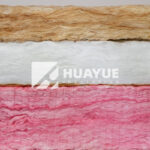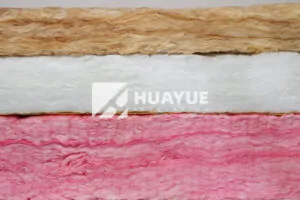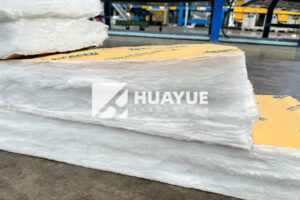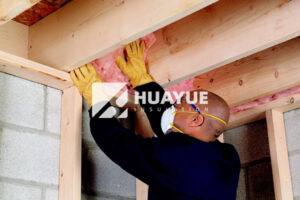What kind of batt should I use for wall insulation?
Many people feel overwhelmed when choosing batt insulation for walls, not knowing which type gives the best comfort and energy savings.
The best batt for wall insulation is usually fiberglass or mineral wool, as both offer good thermal performance, fire resistance, and affordability. Pick a type that fits your wall cavity and local climate needs.

When I first looked into wall insulation for my own home, I had many questions. Batt insulation comes in different types, thicknesses, and materials, making it hard to choose one that works for every project. Let’s explore the main batt options and see which ones fit different situations.
Should I pick fiberglass or mineral wool batts for my wall insulation?
When people renovate or build, they want insulation that is easy to install, keeps energy bills low, and doesn’t attract moisture or pests.
Fiberglass batts and mineral wool batts are the top choices for wall insulation. Both give good R-values (insulation strength) and resist fire. Mineral wool also blocks sound better and does not absorb water.
I remember visiting a friend who installed fiberglass in his new walls because of its low price and easy handling. Fiberglass batts are light, often available at most hardware stores, and can fit tightly into standard wall cavities. Manufacturers make them with a range of R-values, like R-11 to R-21 for 2×4 and 2×6 walls. However, fiberglass can lose effectiveness if it gets very wet or packed too tightly.
Mineral wool, made from rock or slag fibers, costs a bit more but brings extra benefits. It’s water-resistant and holds its R-value even in damp walls. When I used mineral wool for a project near a busy street, I noticed right away it reduced the outside noise. Mineral wool is also naturally fireproof. Its biggest downside is it can be itchy to handle, so I always wear gloves.
Let’s compare them side by side:
| Feature | Fiberglass Batts | Mineral Wool Batts |
|---|---|---|
| R-Value (2×4 wall) | R-11 to R-15 | R-15 to R-16 |
| Fire Resistance | Good | Excellent (non-combustible) |
| Water Resistance | Fair (can absorb) | Excellent (repels water) |
| Cost | Lower | Slightly higher |
| Sound Blocking | Good | Very good |
| Ease of Install | Easy | Slightly more rigid |
If you want the best noise control or are worried about moisture or fire, mineral wool is worth it. For most homes, fiberglass does the job well and is budget-friendly.
How important is the R-value when choosing batt insulation?
Homeowners and builders often pay attention to brand or material but may overlook the R-value, which is central to insulation performance.
The R-value measures how well insulation stops heat flow. The higher the R-value, the better. Use batts with R-values that match your local building code and fit your wall thickness.
When I first used insulation, I learned R-value isn’t just a number on the label. Local codes and climates play a big part. For example, a home in North Dakota needs higher R-values than one in Florida. That’s why I always check what my local code says before buying anything.
For a standard 2×4 wall, most codes call for R-13 or R-15 batts. For newer 2×6 walls, R-19 to R-21 is common. Newer mineral wool brands now offer R-15 for 2×4 and R-23 for 2×6. Always measure your wall cavities before buying. Packing more insulation than the space allows can squeeze the batt and reduce its effectiveness.
Here is a quick reference table:
| Wall Stud Size | Recommended R-Value | Common Batt Thickness |
|---|---|---|
| 2×4 | R-13 to R-15 | 3.5 inches |
| 2×6 | R-19 to R-21 (Mineral wool up to R-23) | 5.5 to 6 inches |
I always remind myself: don’t pick insulation only by brand or price. The right R-value makes the real difference in comfort and heating bills.
Are there special batts for soundproofing or moisture-prone walls?
Some walls need more than just warmth—they might face street noise, or damp basements, or need to protect against mold.
For walls facing high noise, use denser mineral wool acoustic batts. For damp areas or basements, choose closed-cell foam or moisture-resistant mineral wool batts to avoid mold and decay.

In a renovation I did for a home office, my client was worried about loud traffic. Standard fiberglass helped with heat but not noise. The answer was an acoustic mineral wool batt, which made the space much quieter. These have extra density that absorbs vibrations better than regular batts.
For a basement wall prone to moisture, I avoided regular fiberglass, which can trap dampness and breed mold. Instead, I used closed-cell foam panels, but when I needed batts, I chose a mineral wool designed for moisture areas. These batts shed water and still insulate well when conditions stay humid.
Soundproofing and resisting water may require spending a bit more or using specialty batts, but the comfort and durability gains pay off. In wet or sound-sensitive walls, it’s not just about temperature—it’s about the whole living experience.
Conclusion
The right batt for wall insulation depends on your wall size, code needs, and concerns about noise, fire, or moisture. Pick thoughtfully for long-lasting comfort and safety.
You may also be interested in:
Ready to Get Started?
Get in touch with our experts for personalized solutions tailored to your needs.
Get Free QuoteLatest Articles

Eco Batt Insulation: What You Need to Know?
Dec 12, 2025
Let's Work Together
Ready to take your business to the next level? Get in touch with our team of experts and let's discuss how we can help you achieve your goals.
Get Free Solutions






